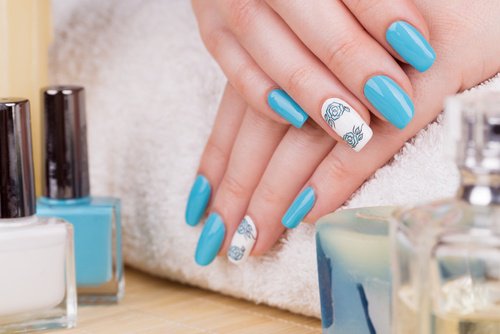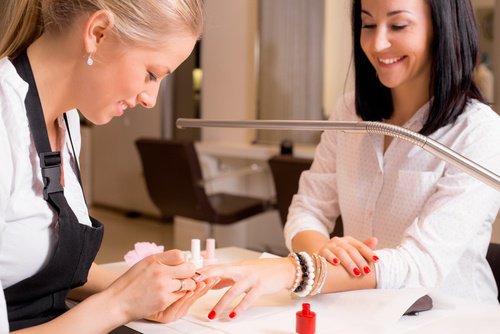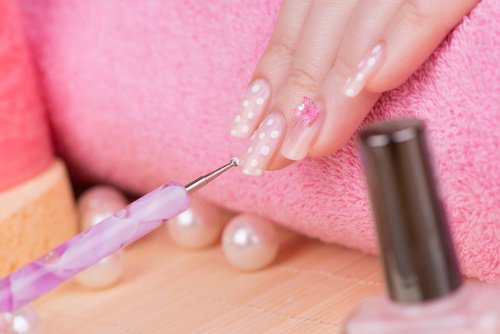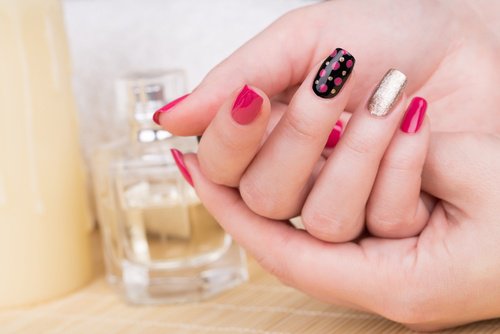What Are The Dangers of Using Acrylic Nails?

It’s true that acrylic nails may look nice, they’re perfect for special occasions and they transform the look of our hands. However, they can also cause a lot of problems and health issues that would be best to avoid.
You may enjoy the look of acrylic nails but they come with a high price for your health. In this article, we’ll tell you all you need to know about the potential dangers of using artificial nails. Read it before deciding if you want to use them or not.
Why are acrylic nails so popular?

It’s easy to see why women prefer to use artificial nails: they cover the imperfections of natural nails, allowing you to create your ideal look.
Acrylic nails have attractive paint and often have interesting designs that are impossible to create on shorter or irregular natural nails.
If your nails tend to break easily, you have a bad habit of biting your nails or you need them to look good for work, acrylic nails are an easy alternative. The same is true for weddings, parties and other special events in our lives.
We recommend you also read:
Strengthen Brittle Nails
Beware of artificial nails

While they may seem harmless, both the application and wearing of acrylics can cause problems. Let’s start by taking a look at what happens at the salon when we get acrylic nails:
Chemical agents
The chemical compounds used – normally resins or formaldehyde, among others – can cause inflammation, as suggested by this investigation carried out by the University of Cartagena in Colombia. They can also cause the natural nail to separate from the skin, burning, pain and allergic reactions.
There are even cases of some women who have completely lost their natural nails and destroyed the nail bed. If this happens, the nail will never grow back.
Fumes
You’re most likely inhaling toxic fumes and other irritants if the salon where you get your nails done is not well ventilated. Some salons also use the substance methyl methacrylate to glue the acrylics in place. According to this report by the New Jersey Department of Health, if it is inhaled, or it comes into direct contact with the fingers, this chemical can cause severe damage to the respiratory system.

Cleaning
Sometimes, beauty salons don’t properly clean and sterilize their instruments and materials after using them on a customer. This means the next customer will likely contract any disease or fungus that the customer before them had. One handy piece of advice is to take your own nail file with you, as these tools can’t be sterilized.
Hygiene
Also, make sure the esthetician wears latex or plastic gloves. A cut or scrape on the hands is the ideal place for all types of diseases that spread by contact to thrive. This study by the University of Valle (Colombia) highlights the need for appropriate hygiene measures in all health and beauty establishments, in order to prevent and control the spread of viruses or bacteria.
Don’t allow beauticians to cut or push back your cuticles. Don’t forget that the cuticle acts as a natural barrier to prevent infection and harmful microorganisms from getting into your body.
Before applying nails, it’s important to make sure your fingers are clean and, above all, dry, so that there are no traces of moisture on the nails. This prevents fungi from spreading once the nails are in place.
More issues with acrylic nails
The potential dangers of applying fake nails don’t end when you leave the salon, even if it’s a reputable establishment with qualified staff. The most common side effects are:
Injuries
Because acrylic nails are completely rigid, they can cause onycholysis, as suggested in this information from the US National Library of Medicine. Any knock, no matter how small, could cause the plastic nail to pull the natural nail away with it. It’s extremely painful and the nail takes a long time to regrow.
Infections

If you injure a finger or the acrylic nail is damaged in some way, it’s much easier for dirt, viruses, and bacteria to accumulate. When this happens, you need to remove the damaged nail and replace it with a new one as soon as possible.
Allergies
Allergic reactions are common with artificial nails. This is due to the plastics and toxins they’re made from. As a result, you may suffer from red, swollen and itching fingers.
We recommend you also read:
In conclusion, wearing acrylic nails is not a decision that should be taken lightly. If, after reading this article, and despite the dangers, you still want to wear acrylic nails, make sure you go to a professional salon with qualified estheticians. Ensure the area is well ventilated, bring your own nail file and watch for any changes or pain in your fingers and nails.
If necessary, remove any nails that are causing problems until the pain subsides. And whenever possible, try to give your nails a break from acrylics.
All cited sources were thoroughly reviewed by our team to ensure their quality, reliability, currency, and validity. The bibliography of this article was considered reliable and of academic or scientific accuracy.
- Giniebra Marín, Grecia María, Rivera Rivadulla, Roxana, Gorrín Díaz, Yaima, Linares Cánovas, Lázaro Pablo, & Ordóñez Álvarez, Lázaro Yoan. (2019). Onicomicosis, factores predisponentes, características y dermatosis asociadas. Revista de Ciencias Médicas de Pinar del Río, 23(3), 380-386. http://scielo.sld.cu/scielo.php?script=sci_arttext&pid=S1561-31942019000300380
- Hernández-Chavarría, Francisco, Alvarado, Karina, & Madrigal, Warren. (2003). Microorganismos presentes en el reverso de las uñas de trabajadores de la salud, Hospital Max Peralta, Cartago, Costa Rica. Revista Costarricense de Ciencias Médicas, 24(1-2), 45-51. https://www.scielo.sa.cr/scielo.php?script=sci_arttext&pid=S0253-29482003000100005
- Organization of Teratology Information Specialists (OTIS). (2021). Trabajar en un Salón de Manicura. Mother To Baby. Fact Sheets. Consultado el 23 de mayo de 2023. https://www.ncbi.nlm.nih.gov/books/NBK582867/
- Ramírez Pérez, María Antonieta, Garicano Quiñónez, Luis Fernando, & Del Campo Balsa, Mª Teresa. (2018). Efectos biológicos y seguimiento médico de los trabajadores expuestos al formaldehído. Revista de la Asociación Española de Especialistas en Medicina del Trabajo, 27(2), 110-117. https://scielo.isciii.es/scielo.php?script=sci_abstract&pid=S1132-62552018000200110
- Rodríguez, L. G. (2017). Dermatitis de contacto alérgica por resinas acrílicas, en auxiliar de odontología. Medidas de prevención y protección ante la enfermedad profesional de la piel. Revista Enfermería del Trabajo, 7(4), 123-124. https://dialnet.unirioja.es/servlet/articulo?codigo=6279148
- Salas, A. Gasca, G., Pes, B., Reyes, A., Martínez, P., & Mirando, N. (2021). Metacrilato de metilo. Poco conocido. Revista Sanitaria de Investigación. https://revistasanitariadeinvestigacion.com/metacrilato-de-metilo-poco-conocido/
- U.S. Food and Drug Administration. (2017). How to Safely Use Nail Care Products. Consultado el 24 de mayo de 2023. https://www.fda.gov/consumers/consumer-updates/how-safely-use-nail-care-products
- American Academy of Dermatology Association. (s. f.). Artificial nails: Dermatologists’ tips for reducing nail damage. Consultado el 24 de mayo de 2023. https://www.aad.org/public/everyday-care/nail-care-secrets/basics/pedicures/reduce-artificial-nail-damage
This text is provided for informational purposes only and does not replace consultation with a professional. If in doubt, consult your specialist.








